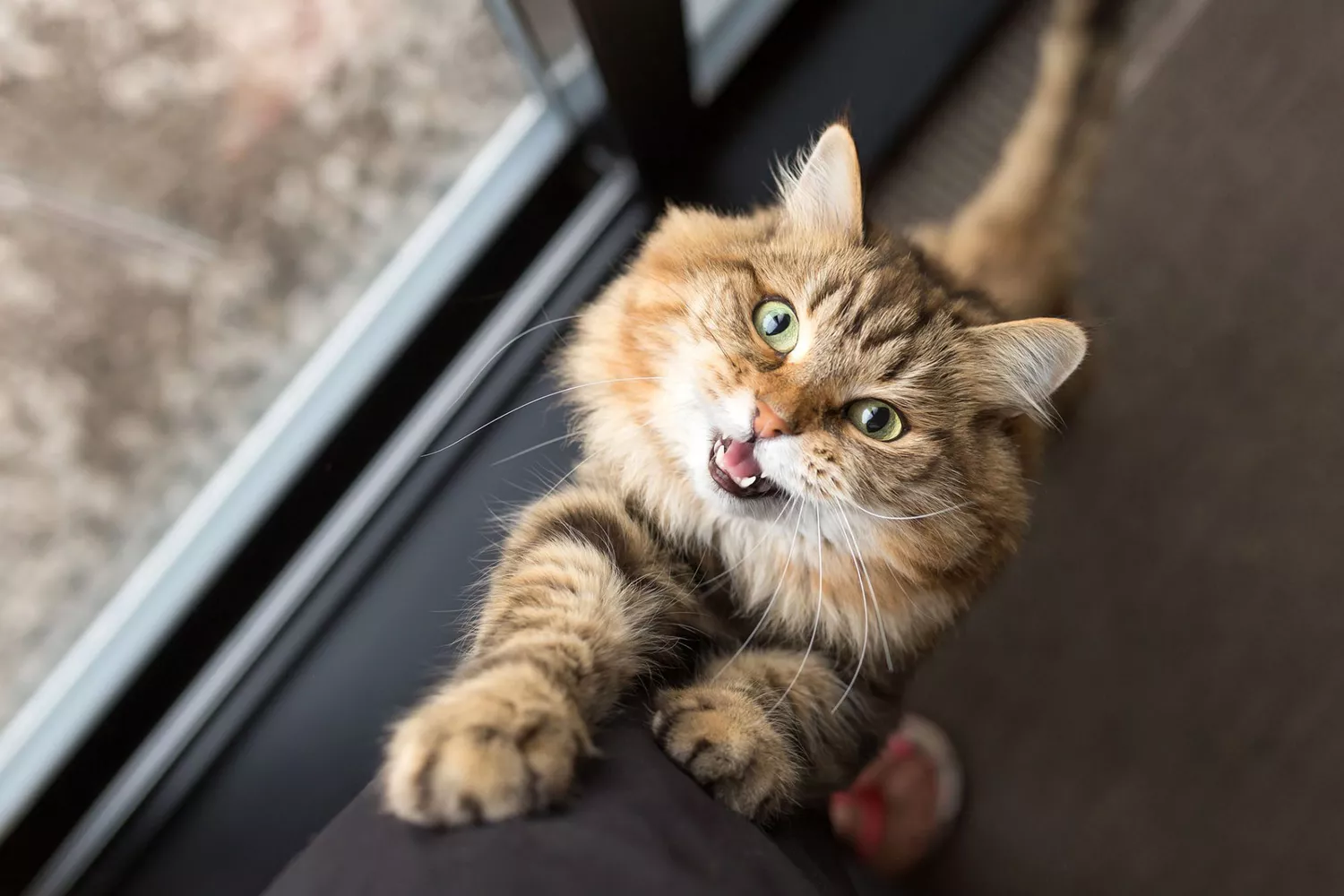
Individuals have actually got cats all wrong. Felines aren’t anti-social, nocturnal predators who are out for a hostile takeover every time your back is turned.
Like all animals we live alongside, cats share their sensations by method of their body. We can determine when our cat feels terrified or stressed, is in a huntress or playful mood, or delighted and desiring some snuggle time if we pay close attention to their body language.
If you’re concerned about some element of your feline’s behavior, addressing it begins making certain your feline pal feels well. If you notice abrupt, unexplained changes in your cat’s behavior, consult your vet to rule out medical causes for this change.
Fearful Cat Behaviors
” Cats’ worry can typically be caused by direct exposure to unknown or unforeseeable things, such as loud sounds and sudden, jerky motions,” says Mikel Delgado, PhD, CAAB, co-owner of Feline Minds, a feline habits consulting firm. To form a trusting connection, leave any force or aggravation out of your relationship.
Cats who may discover a human frightening may show one or all of the following habits:
Marking: Marking is normally done on a vertical surface area to soothe a cat’s nerves or stake a claim in an unfamiliar environment.
Whacking: Cats use their claws to safeguard themselves when they feel trapped, frightened, or to implement individual space.
Vocalizing: Cats yowl, hiss, or spit when they’re threatened or scared. They will hiss as a warning before biting.
Fully Grown Cat Biting: Cats generally bite in response to severe discomfort, panic, or disappointment.
How to Recognize if Your Cat Feels Stressed
Felines who feel threatened or under distress may reveal it with an arched back and raised hair. “Cat body language is intricate and likewise can differ from individual to individual,” says Delgado, who is likewise co-author of the book Total Cat Mojo.
To promote a sensation of security with your feline, constantly bear in mind abrupt changes in his environment that might distress him. “Cat moms and dads can make sure to stay calm and offer positive attention to their cat when stressful circumstances happen, such as if moving houses or taking the feline to the veterinarian,” Vitale says.
Hunting Cat Behaviors
Felines are susceptible preying animals, they are also experienced hunters. Their sharp predator abilities don’t stop at mice and birds; small kittens will “hunt” your hands and feet, often all of a sudden (hi kitty claws from under the sofa!), and might get specifically scratchy throughout intense play sessions or mock “hunting” expeditions.
Here are some behaviors cats may exhibit when they are on the prowl:
Scratching: Cats utilize their nails to grab, comprehend, and gouge prey.
Predatory Play Biting: Cats eliminate their prey (or their preferred toy) with a quick bite to their neck.
Vocalizing: Cats sometimes make a chirping sound while hunting and when avoided from stalking their prey.
“Toss a packed animal for your cat to ‘kill’ before you stroll through the space. Tossing the food so the cat strikes on this will likewise teach the cat to put the ‘kill’ on the food.”
How to Recognize if Your Cat is on the Prowl
A cat with body movement that consists of a direct, unblinking gaze, a stiff tail decreased towards the ground, and stiff, raised haunches is a feline all set to strike. “When felines are feeling predatory, you will see them crouching, looking and stalking their victim, seeing carefully, often while very still,” Delgado says. “Their students might be dilated, and their hairs will be outstretched forward. They might ‘chatter’ at their victim, and before striking, they may do a little ‘butt-wiggle.’ If they decide to attack, they will all of a sudden pounce.”
Caring Cat Behaviors
If you are client, kind, and always prepared for your cat’s everyday requirements– you’ll share a close bond and a life time of loving friendship with your feline companion. A research study in Current Biology showed cats form accessories to their owners, just like canines do. “The bond in between human and feline is not all that different from the bond in between parent and offspring,” states Kristyn Vitale, PhD, a researcher at Oregon State University and the leader of the research study.
Here are some behaviors that a feline might exhibit when wanting some individually time with their human moms and dad:
Headbutting: Headbutting, aka bunting, is one method felines show love, greet, and mark their family. Leading with their heads, they bonk individuals they enjoy carefully, smudging their scent along as they go.
Vocalizing: If your cat’s vocalizing to welcome, communicate, or get your attention, they trust you to listen. The all-purpose meow could be anything from a welcoming, a demand, or even a problem.
Slow Blinking: This non-verbal interaction consists of relaxed eyes and a sluggish blink. It’s equivalent to a calm, caring gaze.
Belly Displaying: A cat’s rollover invites different interactions than a canine’s however walking cane be a sign your cat desires your attention. A feline’s tummy skin is thin and highly delicate, Ingrid Johnson, CCBC, says.
Kneading: Kittens would at first knead their mother’s stubborn belly while nursing. When relaxing, many felines will knead blankets or perhaps your skin as they wander off to sleep.
How to Recognize a Relaxed, Happy Cat
In addition to showing the above caring habits, a pleased cat’s body language will reveal you their trust. “Relaxed cats may be laying on their sides or with their paws tucked, their eyes might be gently blinking,” Delgado says.
Not all felines share their viewpoints as freely and obviously as you might want so don’t be reluctant to seek the assistance of a licensed animal habits expert or a feline veterinary behaviorist to find out more about your feline member of the family. Your cat pal will value you taking the time to listen to what they are attempting to interact.











